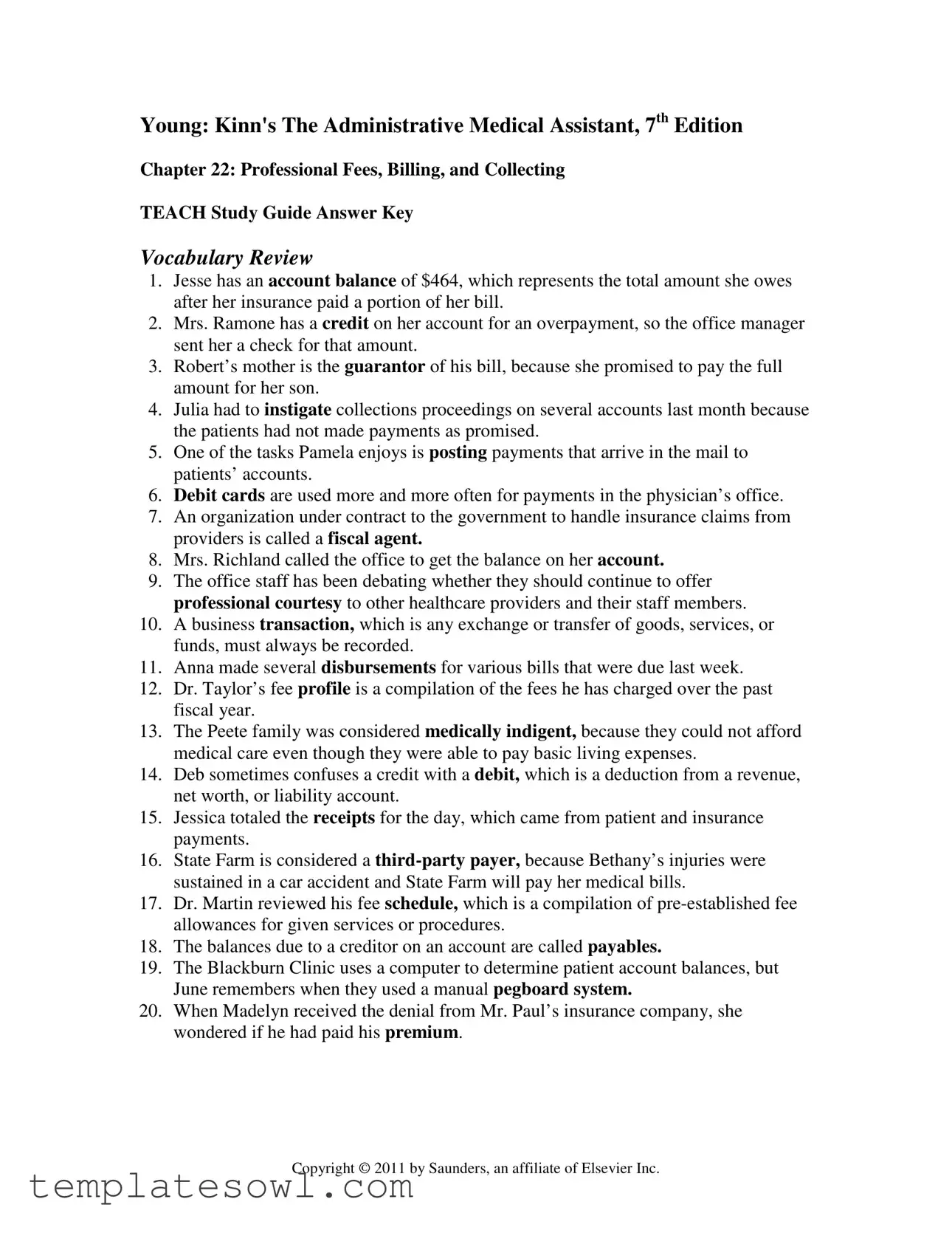Young: Kinn's The Administrative Medical Assistant, 7th Edition
Chapter 22: Professional Fees, Billing, and Collecting
TEACH Study Guide Answer Key
Vocabulary Review
1.Jesse has an account balance of $464, which represents the total amount she owes after her insurance paid a portion of her bill.
2.Mrs. Ramone has a credit on her account for an overpayment, so the office manager sent her a check for that amount.
3.Robert’s mother is the guarantor of his bill, because she promised to pay the full amount for her son.
4.Julia had to instigate collections proceedings on several accounts last month because the patients had not made payments as promised.
5.One of the tasks Pamela enjoys is posting payments that arrive in the mail to patients’ accounts.
6.Debit cards are used more and more often for payments in the physician’s office.
7.An organization under contract to the government to handle insurance claims from providers is called a fiscal agent.
8.Mrs. Richland called the office to get the balance on her account.
9.The office staff has been debating whether they should continue to offer professional courtesy to other healthcare providers and their staff members.
10.A business transaction, which is any exchange or transfer of goods, services, or funds, must always be recorded.
11.Anna made several disbursements for various bills that were due last week.
12.Dr. Taylor’s fee profile is a compilation of the fees he has charged over the past fiscal year.
13.The Peete family was considered medically indigent, because they could not afford medical care even though they were able to pay basic living expenses.
14.Deb sometimes confuses a credit with a debit, which is a deduction from a revenue, net worth, or liability account.
15.Jessica totaled the receipts for the day, which came from patient and insurance payments.
16.State Farm is considered a third-party payer, because Bethany’s injuries were sustained in a car accident and State Farm will pay her medical bills.
17.Dr. Martin reviewed his fee schedule, which is a compilation of pre-established fee allowances for given services or procedures.
18.The balances due to a creditor on an account are called payables.
19.The Blackburn Clinic uses a computer to determine patient account balances, but June remembers when they used a manual pegboard system.
20.When Madelyn received the denial from Mr. Paul’s insurance company, she wondered if he had paid his premium.




